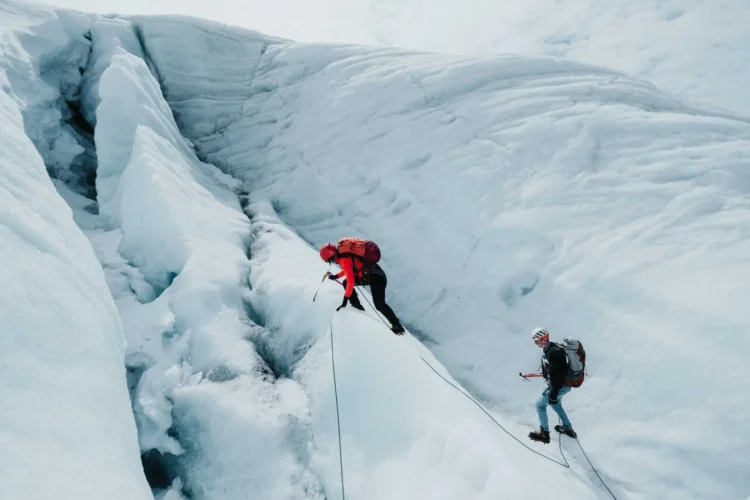[ad_1]
In the south of Norway lies Folgefonna National Park, which is largely made up of the massive Juklavass Glacier. This remarkable natural phenomenon offers a close-up view of ancient ice. During the glacier hike, you’ll embark on an adventure with an experienced mountaineer, exploring the crevasses of this centuries-old ice. Beautiful hikes are common in Norway, but if you’re looking for a truly unique experience, this glacier hike is a must-do. Below, you’ll find our experience with the glacier hike in Norway so you know exactly what to expect.


A glacier is a massive body of ice, sometimes up to 800 meters (2624 ft) thick, that slowly moves over land. Smaller glaciers move about 50 meters (164 ft) per year, while larger ones can shift up to 200 meters (656 ft) annually. This ice mass forms from the accumulation and compression of snow over thousands of years. These ‘rivers of ice’ develop in mountainous and polar regions where annual snowfall exceeds the amount that melts or evaporates.
Glaciers are incredibly powerful and shape many types of landscapes. As they move, they erode the land, creating valleys, fjords, and moraines. Additionally, glaciers are crucial reservoirs of fresh water and important indicators of climate change.
In fact, anyone between the ages of 8 and 80 can participate in the hike, as the guides group participants based on fitness levels. No technical skills are required for the glacier hike, but a good basic fitness level will be beneficial since the hike lasts about 5 to 6 hours. Upon arrival, you’ll receive a helmet, crampons, an ice axe, and a climbing harness. You’ll look like a real mountaineer and be ready for a safe trek across the glacier. The hike starts with a large group, which is then divided into smaller groups of around 8 people based on fitness and preferences. If you’re less fit, you’ll explore the more accessible parts of the glacier. If you’re up for a challenge, you’ll venture with the guide through the glacier’s crevasses, which involves some climbing and scrambling.
After the first part of the hike, we felt confident and chose the more challenging route. Once we were on the glacier, the guide secured a rope connecting us, allowing us to move safely across the ice. The guide shared interesting facts and provided clear instructions. Everything felt very safe and controlled, even though we were walking on a massive ice field. The guide led the way and determined the route. In our case, it wasn’t a marked path but creating our own route. The guide chipped away at the ice here and there to create footholds, and with your ice axe, you dug into the ice to pull yourself up when climbing. The views of the glacier, fjords, and glacier lake were spectacular, and for a moment, we felt like true mountaineers exploring unspoiled Norway.
Tip: Avoid drinking too much water before and during the hike, as being tethered together makes it difficult to use the restroom. There are two breaks during the hike where this is possible.


The glacier ice is indeed blue, especially in areas where the ice is melting, showing beautiful bright blue hues. Depending on the weather and season, meltwater can create tunnels of blue ice within the glacier. We did the glacier hike in late June and unfortunately arrived just before the tunnels were accessible. However, we still saw the blue ice and had a fantastic hike. It’s worth noting that seeing these blue ice tunnels isn’t guaranteed. The best chance to see the tunnels is in August and September.


- Layered clothing
- Waterproof gloves
- Backpack
- Water
- Lunch or snacks
- Sunglasses
- Sunscreen
You can do the glacier hike in Norway between mid-May and late September. Depending on the weather, the season might extend a few weeks longer, sometimes into mid-October. It’s recommended to book the glacier hike in advance.


We did this hike from the lovely town of Odda. This is also the base for the Trolltunga hike, so it’s convenient to stay here for a few days. The drive from Odda is about an hour, but it’s a beautiful route! If you want to stay closer, Jondal is the nearest village, though it offers fewer activities and has fewer dining and accommodation options.
[ad_2]
Source link



No Comments
Leave Comment